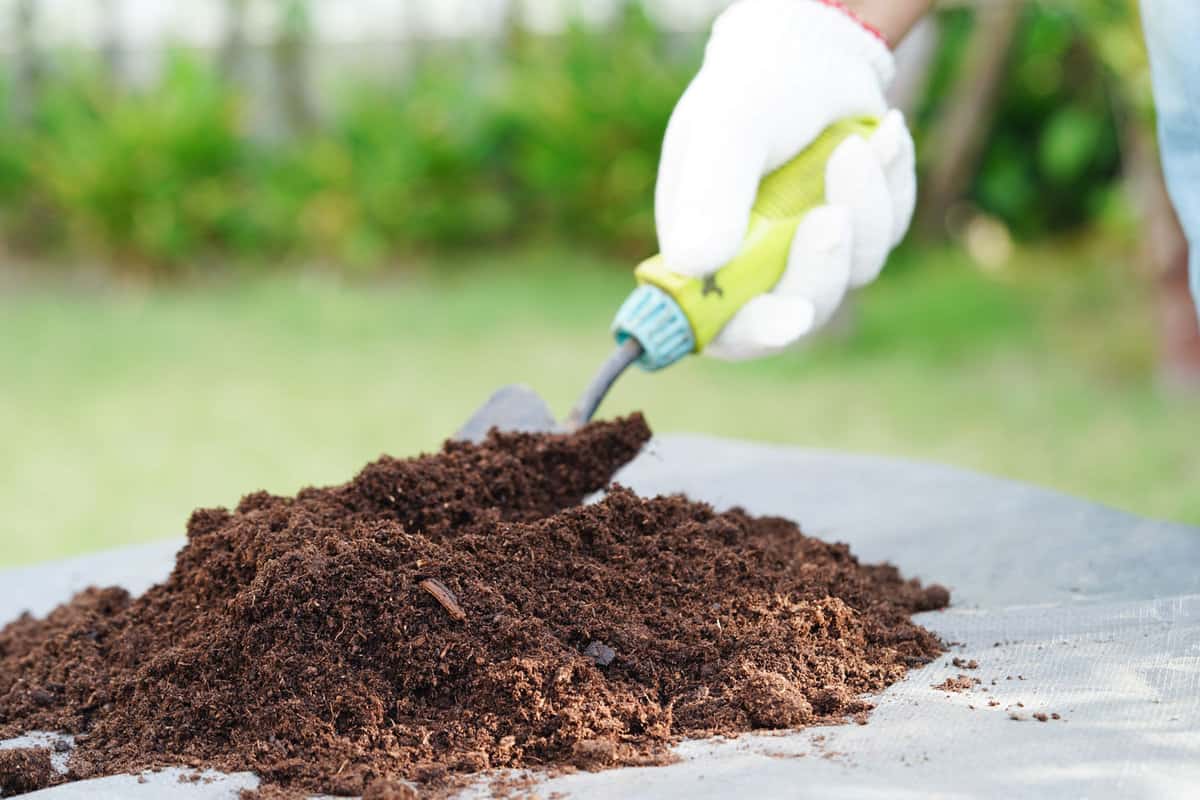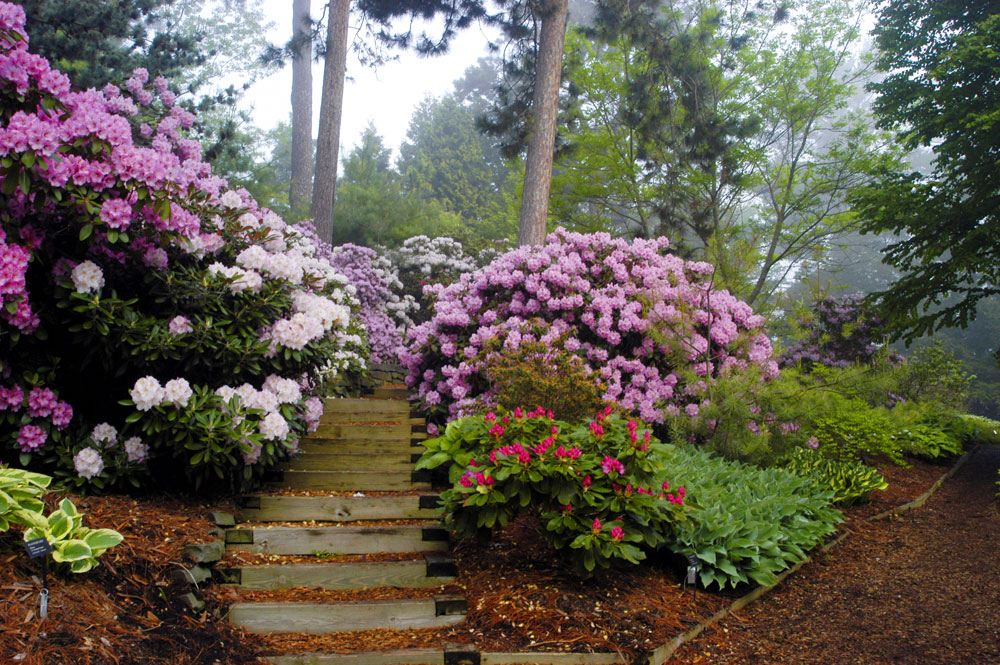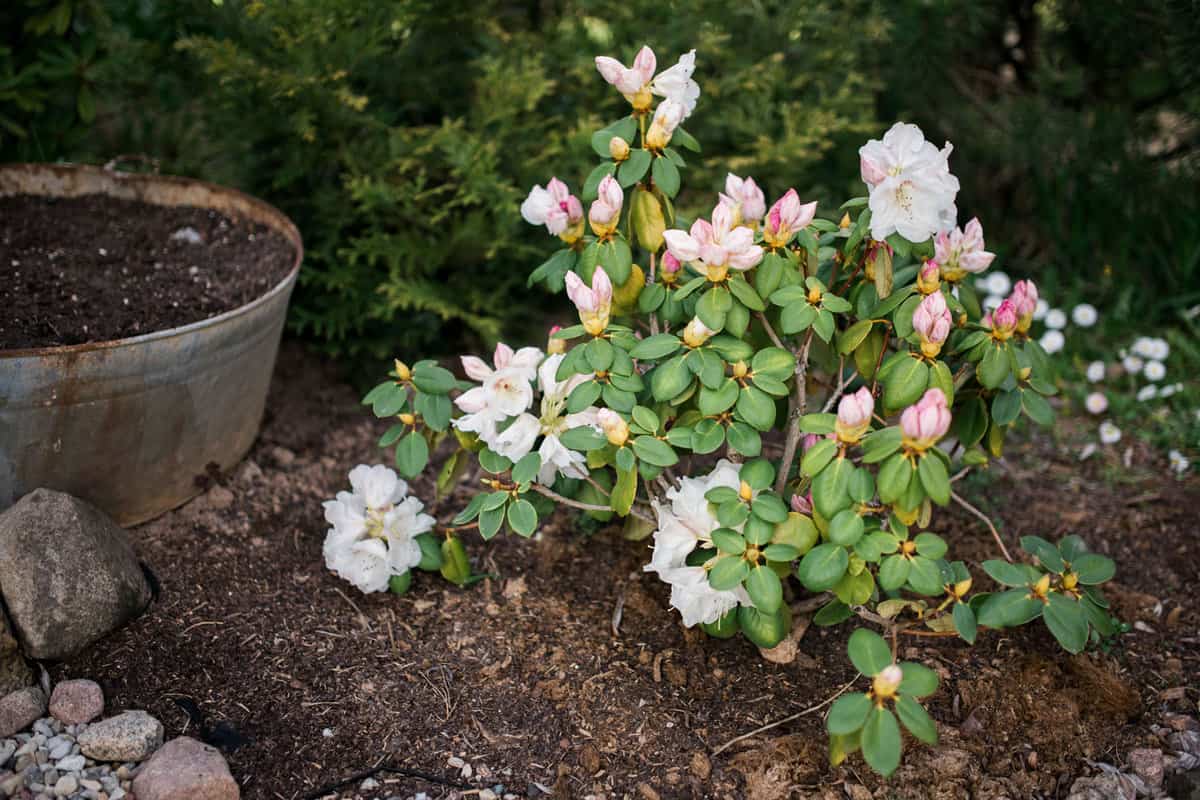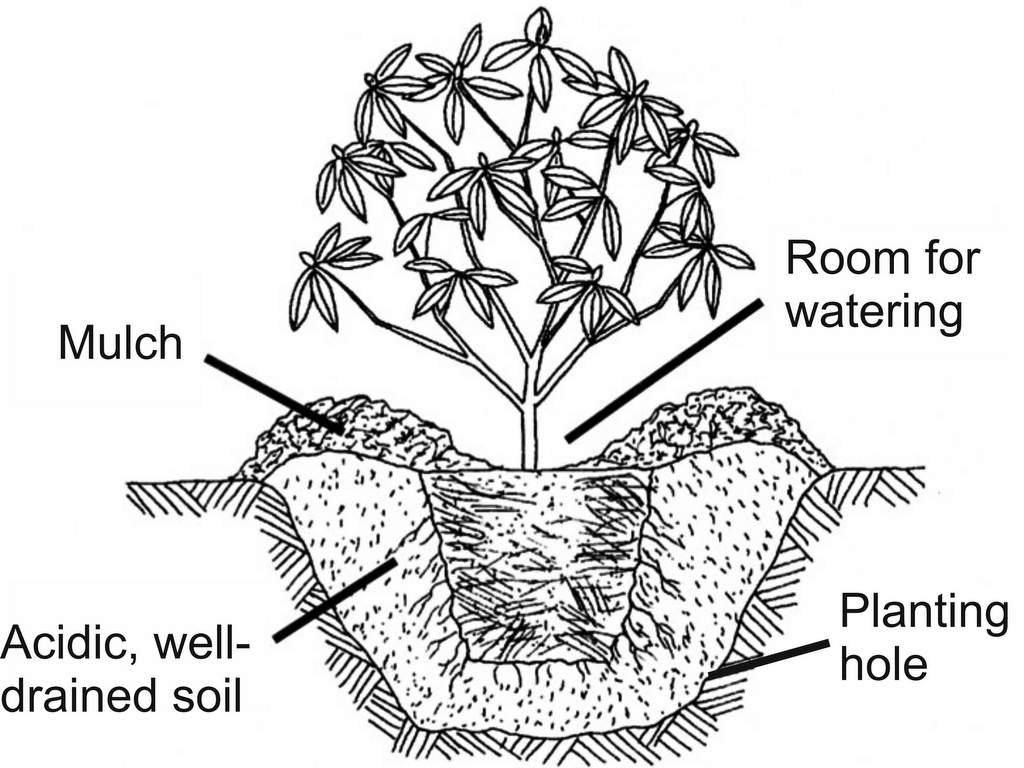Understanding Rhododendron Soil Preferences
Rhododendrons are a type of flowering plant that has adapted to thrive in specific acidic environments. These plants have evolved to grow in soils with a low pH, typically between 5.5 and 6.5. The importance of soil pH for rhododendrons cannot be overstated, as it plays a critical role in their ability to absorb essential nutrients. In fact, rhododendrons have developed specialized roots that allow them to tap into the nutrients available in acidic soils, making them one of the most successful plant species in these environments.
So, do rhododendrons like acidic soil? The answer is a resounding yes. Rhododendrons have a unique physiology that allows them to thrive in acidic conditions, where other plants might struggle to survive. The acidic soil provides the perfect environment for rhododendrons to absorb the nutrients they need to grow and flourish. However, if the soil pH is too high or too low, it can have serious consequences for the plant’s health.
For example, if the soil pH is too high, it can lead to a deficiency in essential nutrients like iron and manganese. This can cause the leaves to turn yellow or become discolored, and can even lead to stunted growth. On the other hand, if the soil pH is too low, it can cause the plant to become stressed, leading to a range of problems including root rot and leaf drop.
Therefore, it is essential to understand the soil preferences of rhododendrons and to take steps to create an acidic environment that meets their needs. By doing so, you can help your rhododendrons thrive and enjoy the beautiful flowers and foliage that they have to offer.
What is Acidic Soil and How to Measure pH Levels
Acidic soil is a type of soil that has a pH level below 7.0, with a pH range of 5.5 to 6.5 being ideal for rhododendrons. To determine the pH level of your soil, you can use a simple soil testing kit or send a sample to a laboratory for analysis. There are also several DIY methods to measure soil pH, including using pH paper or a pH meter.
When collecting a soil sample, it’s essential to take a representative sample from the root zone of your rhododendron. This can be done by digging a small hole about 6-8 inches deep and collecting a sample from the sidewall of the hole. Mix the sample well and remove any debris or rocks.
Interpreting pH test results can be straightforward. A pH level below 5.5 indicates acidic soil, while a pH level above 7.0 indicates alkaline soil. If your soil pH is too high or too low, you can take steps to adjust it to the optimal range for your rhododendron.
Some common methods for measuring soil pH include:
- pH paper: This is a simple and inexpensive method that involves dipping a strip of paper into a soil solution and comparing the resulting color to a pH chart.
- pH meter: This is a more accurate method that involves using a handheld device to measure the pH level of a soil solution.
- Soil testing kit: This is a DIY kit that usually includes a pH test strip or a pH meter, as well as other tests for nutrient levels and soil structure.
By understanding the pH level of your soil and taking steps to adjust it if necessary, you can create an optimal environment for your rhododendron to thrive.
The Benefits of Acidic Soil for Rhododendrons
Acidic soil provides numerous benefits for rhododendrons, making it an essential component of their care. One of the primary advantages of acidic soil is improved nutrient uptake. Rhododendrons have adapted to thrive in acidic environments, where they can absorb essential nutrients like iron, manganese, and aluminum more efficiently. These nutrients are crucial for healthy growth, flowering, and overall plant development.
Another benefit of acidic soil for rhododendrons is increased root growth. Rhododendrons have a unique root system that allows them to absorb nutrients from the soil more effectively in acidic conditions. This leads to a more extensive root system, which enables the plant to absorb more water and nutrients, resulting in healthier and more robust growth.
Acidic soil also enhances disease resistance in rhododendrons. Many common rhododendron diseases, such as root rot and leaf spot, thrive in alkaline soils. By maintaining an acidic soil pH, you can create an environment that is less conducive to disease development, reducing the risk of infection and promoting overall plant health.
In addition to these benefits, acidic soil can also improve the overall appearance of your rhododendron. Acidic soil promotes the production of anthocyanins, which are responsible for the vibrant colors and pigmentation of rhododendron flowers. This means that rhododendrons grown in acidic soil tend to have more intense and longer-lasting flowers, making them a stunning addition to any garden or landscape.
Overall, the benefits of acidic soil for rhododendrons are clear. By providing the right soil conditions, you can promote healthy growth, improve nutrient uptake, increase root growth, enhance disease resistance, and enjoy more vibrant and longer-lasting flowers.
How to Create an Acidic Soil Environment for Your Rhododendrons
Creating an acidic soil environment for your rhododendrons is crucial for their growth and survival. Rhododendrons thrive in acidic soils with a pH between 5.5 and 6.5, and there are several ways to achieve this. One of the most effective methods is to use peat moss, a natural acidic soil amendment that can help lower the pH of your soil.
To use peat moss, simply mix it into the soil around your rhododendron, following the recommended application rates on the packaging. You can also add sulfur or aluminum sulfate to the soil to further lower the pH. However, be careful not to overdo it, as excessive acidity can be detrimental to your rhododendron’s health.
Another option is to use acidic fertilizers specifically formulated for acid-loving plants like rhododendrons. These fertilizers are designed to provide the necessary nutrients for healthy growth while maintaining an acidic soil pH. Look for fertilizers with a pH between 5.5 and 6.5, and follow the recommended application rates to avoid over-fertilization.
In addition to using acidic soil amendments and fertilizers, you can also create an acidic soil environment by incorporating organic matter into the soil. Compost, leaf mold, and well-rotted manure are all excellent options, as they can help lower the pH of the soil while providing essential nutrients for your rhododendron.
When creating an acidic soil environment, it’s essential to monitor the soil pH regularly to ensure it remains within the optimal range for your rhododendron. You can use a soil testing kit or send a sample to a laboratory for analysis to determine the pH level of your soil.
By following these tips and creating an acidic soil environment, you can provide your rhododendron with the conditions it needs to thrive. Remember, do rhododendrons like acidic soil? The answer is yes, and by providing the right soil conditions, you can enjoy healthy, vibrant, and thriving rhododendrons.
Choosing the Right Fertilizers for Acid-Loving Rhododendrons
When it comes to fertilizing acid-loving rhododendrons, it’s essential to choose the right products to ensure optimal growth and health. Rhododendrons require fertilizers that are specifically formulated for acid-loving plants, as they have unique nutritional needs that differ from other plants.
Look for fertilizers that are labeled as “acid-forming” or “acid-loving,” as these products are designed to provide the necessary nutrients for rhododendrons while maintaining an acidic soil pH. Some good options include fertilizers with a pH between 5.5 and 6.5, which is the ideal range for rhododendrons.
Some recommended fertilizers for acid-loving rhododendrons include:
- Miracid Acid-Loving Plant Food: This fertilizer is specifically formulated for acid-loving plants like rhododendrons and provides essential nutrients for healthy growth.
- Scotts Osmocote 14-14-14 Professional Plant Food: This fertilizer is a slow-release formula that provides nutrients for up to 4 months and is suitable for acid-loving plants like rhododendrons.
- Espoma Organic Acid-Tone Fertilizer: This fertilizer is an organic, slow-release formula that provides essential nutrients for acid-loving plants like rhododendrons while promoting healthy soil biota.
When applying fertilizers to your rhododendrons, be sure to follow the recommended application rates and timing to avoid over-fertilization. It’s also essential to monitor the soil pH regularly to ensure it remains within the optimal range for your rhododendron.
By choosing the right fertilizers for your acid-loving rhododendrons, you can provide them with the necessary nutrients for healthy growth and optimal performance. Remember, do rhododendrons like acidic soil? The answer is yes, and by providing the right fertilizers, you can help your rhododendrons thrive in acidic soil conditions.
Common Mistakes to Avoid When Growing Rhododendrons in Acidic Soil
While growing rhododendrons in acidic soil can be rewarding, there are several common mistakes to avoid in order to ensure optimal growth and health. One of the most common mistakes is over-fertilization, which can lead to an excessive buildup of nutrients in the soil and cause more harm than good.
Another mistake to avoid is inadequate watering, which can cause the roots of the rhododendron to become stressed and lead to a range of problems, including root rot and leaf drop. It’s essential to water your rhododendron regularly, but make sure not to overwater, as this can also cause problems.
Poor soil drainage is another common mistake to avoid when growing rhododendrons in acidic soil. Rhododendrons prefer well-draining soil, and if the soil is too dense or waterlogged, it can cause the roots to rot and lead to other problems. To avoid this, make sure to add organic matter such as compost or peat moss to the soil to improve its structure and drainage.
Other common mistakes to avoid when growing rhododendrons in acidic soil include:
- Not providing enough sunlight: Rhododendrons need plenty of sunlight to thrive, so make sure to plant them in a location that receives at least 4-6 hours of direct sunlight per day.
- Not pruning regularly: Pruning is essential for maintaining the health and shape of your rhododendron. Make sure to prune your rhododendron regularly to encourage new growth and prevent disease.
- Not monitoring soil pH: Soil pH is critical for rhododendron growth, and if it becomes too high or too low, it can cause problems. Make sure to monitor your soil pH regularly and adjust it as necessary.
By avoiding these common mistakes, you can help ensure that your rhododendron thrives in acidic soil. Remember, do rhododendrons like acidic soil? The answer is yes, and by following these tips, you can provide your rhododendron with the conditions it needs to grow and flourish.
Monitoring and Adjusting Soil pH for Optimal Rhododendron Growth
Regular soil pH monitoring is crucial for maintaining optimal conditions for rhododendron growth. Rhododendrons prefer a slightly acidic to acidic soil pH, ranging from 5.5 to 6.5. If the soil pH becomes too high or too low, it can lead to nutrient deficiencies, reduced growth, and increased susceptibility to disease.
To monitor soil pH, you can use a soil testing kit or send a sample to a laboratory for analysis. It’s essential to collect a representative sample from the root zone of your rhododendron, as this will give you an accurate reading of the soil pH.
If your soil pH is too high, you can adjust it by adding acidic soil amendments such as peat moss, sulfur, or aluminum sulfate. If your soil pH is too low, you can adjust it by adding lime or dolomitic limestone.
Here are some tips for adjusting soil pH:
- Start with small adjustments: When adjusting soil pH, it’s essential to start with small adjustments and monitor the results. This will help you avoid over-correcting and causing more harm than good.
- Use the right amendments: Choose the right soil amendments for your rhododendron’s specific needs. For example, if your soil pH is too high, use an acidic amendment like peat moss or sulfur.
- Monitor regularly: Regular monitoring of soil pH is crucial for maintaining optimal conditions for rhododendron growth. Check your soil pH regularly and adjust as necessary.
By monitoring and adjusting soil pH regularly, you can provide your rhododendron with the optimal conditions it needs to thrive. Remember, do rhododendrons like acidic soil? The answer is yes, and by maintaining the right soil pH, you can help your rhododendron grow and flourish.
Conclusion: Thriving Rhododendrons in Acidic Soil
In conclusion, rhododendrons are a unique and beautiful plant species that thrive in acidic soil environments. By understanding the importance of soil pH and how to create an acidic soil environment, you can provide your rhododendron with the optimal conditions it needs to grow and flourish.
Remember, do rhododendrons like acidic soil? The answer is yes, and by following the tips and advice provided in this article, you can help your rhododendron thrive in acidic soil conditions. From understanding the benefits of acidic soil to monitoring and adjusting soil pH levels, this article has provided a comprehensive guide to rhododendron care.
By applying the knowledge and techniques outlined in this article, you can enjoy the beauty and fragrance of thriving rhododendrons in your garden or landscape. Whether you’re a seasoned gardener or just starting out, this article has provided the information and inspiration you need to create an acidic soil environment that will help your rhododendron flourish.
In summary, the key takeaways from this article are:
- Rhododendrons thrive in acidic soil environments with a pH between 5.5 and 6.5.
- Creating an acidic soil environment requires the use of acidic soil amendments such as peat moss, sulfur, and other soil amendments.
- Monitoring and adjusting soil pH levels is crucial for maintaining optimal conditions for rhododendron growth.
- Using fertilizers specifically formulated for acid-loving plants like rhododendrons is essential for optimal growth and health.
By following these tips and advice, you can help your rhododendron thrive in acidic soil conditions and enjoy the beauty and fragrance of these stunning plants.








